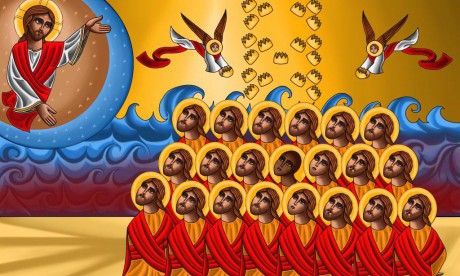The murder of twenty one Christians by Islamic State in Libya brought condemnation from around the world. Their murder puts them in a long history of persecution of the Coptic Church.
Martyrdom was not new to them or their people. For nearly two thousand years, their Church had prided itself as being the Church of the Martyrs.
If martyrdom was a central feature of the early Church, it had become the hallmark of its identity in Egypt.
Even as early as the third century, a quote attributed to Tertullian declared: “If the martyrs of the whole world were put on one arm of the balance and the martyrs of Egypt on the other, the balance would tilt in favour of the Egyptians.”
From the blood of Saint Mark the Evangelist shed in Alexandria in 68 AD, the river continued to flow, each century adding its martyrs.
The names of the persecutors had changed; Romans and Byzantines and Arabs, Emperors and Caliphs and Kings. Each had contributed his share, each had attempted to end their faith, and each in turn had failed.
The horrific murder of twenty Copts and a Ghanaian Christian at the hands of Islamic State militants in Libya in February was followed by swift condemnations from around the world. Most world leaders described the victims the way they identified themselves – as Coptic Christians.
Pope Francis recognised that they had been “killed simply for the fact that they were Christians,” and that “their blood confesses Christ.”
Their murderers certainly concurred. They had searched the workers’ compoundlooking for Copts – “people of the cross” they named them in the video.
Their beheading was in revenge for Kamilia Shehata, the wife of a Coptic priest, who had briefly disappeared in July 2010 before returning to her family.
Soon her cause became a rallying cry for Egyptian Salafis convinced that she had been prevented from converting to Islam and held against her will by the Church. Continue reading
Source & Image:
Additional readingNews category: Features.




